THE RUNDOWN
Government complacency has allowed both cartels and transnational criminal organizations (TCO) to expand their business model by trafficking drugs, weapons, and persons across borders. As illicit drugs are increasingly trafficked across international borders, the number of persons overdosing on these drugs has risen as well, contributing to overall visibility of the issue.
An increase in fentanyl and methamphetamine seizures demonstrates the breadth of the illicit drug markets, while also revealing trafficking routes and methodologies. Trafficking routes are based on drug production sites and highly profitable consumer markets. However, illicit drugs do not always follow direct geographic routes.
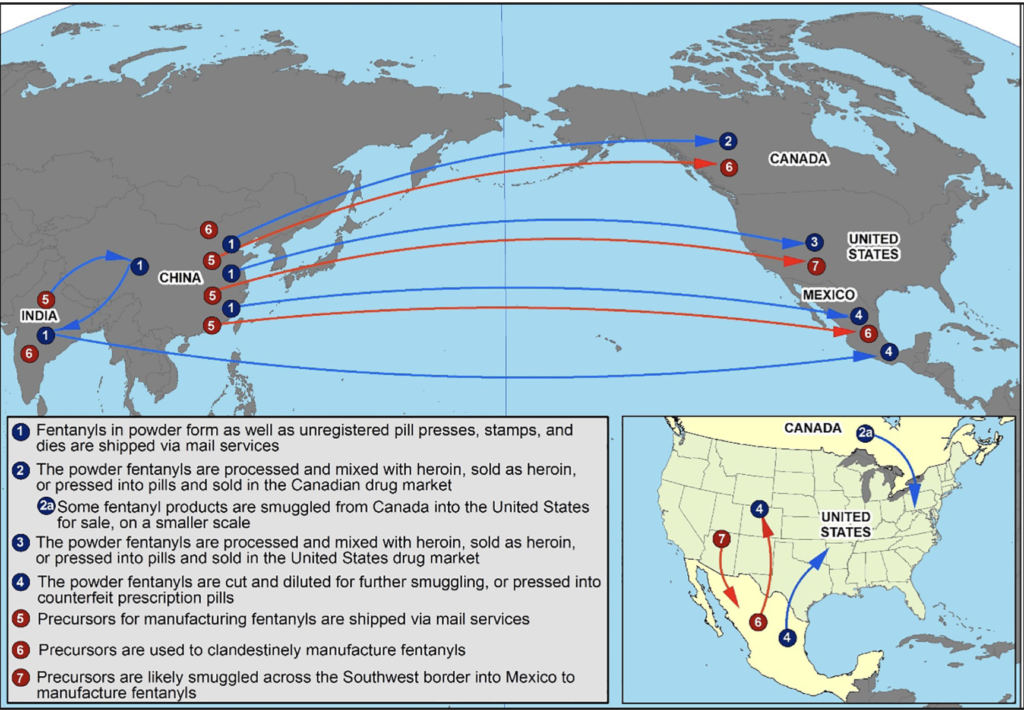
From Source to Distribution
To improve the flow of products from source to street, criminal organizations have developed unique economic and trade partnerships. For example, the DEA has seen traditional transnational criminal organizations (TCOs) like the mafia work with former competitors, cartels, outlaw motorcycle gangs, and street and prison gangs to expand the trade and distribution network. Just as a business builds partnerships to expand its operations globally, these criminal organizations have begun to take an economic approach to expand their organization and networks globally.
Synthetic opioids and methamphetamine are generally manufactured in Mexico, South America, and Southeast Asia, according to the DEA. However, the precursor chemicals required to manufacture methamphetamine are primarily sourced from China and Myanmar. Transnational criminal networks in these two Asian counties are exploiting bans on precursor chemicals in the U.S. and Canada while taking advantage of the more than 5,000 pharmaceutical firms and 160,000-400,000 chemical manufacturers and distributors that manufacture and sell their products to the criminal organizations, according to the U.S. State Department’s International Narcotics Control and Strategy Report.
While China has adopted stricter drug control policies, the breadth of the underground sales of precursor chemicals and the ability to smuggle the chemicals into Mexico for manufacture far outweigh the ability of the Chinese government to prevent the movement of the chemicals internationally. The weakened state of Myanmar in Southwest Asia further supports the actions of the TCOs.
Cocaine has been a staple in the drug trade since the 1970s and 1980s. It is primarily sourced and manufactured in South America, especially in Colombia, Bolivia, and Peru. Efforts by the Colombian Government, however, have led to a shift toward Andean cocaine that capitalizes off government instability and the presence of criminal organizations in Peru and Bolivia. Because of the expansive criminal networks and cooperation, South American cocaine can be found in nearly every country on earth, especially in the European and Asian markets.
Afghanistan and Burma contribute to the drug trade and consumption in Southwest Asia by incentivizing poppy cultivation and improving methamphetamine production processes. The drugs are primarily moved along existing heroin trafficking routes, along with other illicit substances, under the protection of the Taliban, Hezbollah, and the Assad regime, to name a few.
While the illicit flow of drugs into the U.S. has led to a decrease in the price, an increase in purity, and a decrease in domestic manufacturing operations, cooperative partnerships and trade routes have bolstered profits for criminal organizations. The expanse of criminal networks and the widespread availability of illicit drugs have contributed to a global drug crisis.
Changing Routes
The global COVID-19 pandemic adversely affected efforts to curtail drug trafficking, according to the 2022 International Narcotics Control Strategy Report. Decreases in law enforcement responses and resources formerly focused on counterdrug strategies led to an alteration in drug trafficking routes and significantly increased the availability of illicit drugs. Systemic shifts in justice coupled with a rise in impunity and corruption in several Central and South American countries have furthered the process–both directly and indirectly.
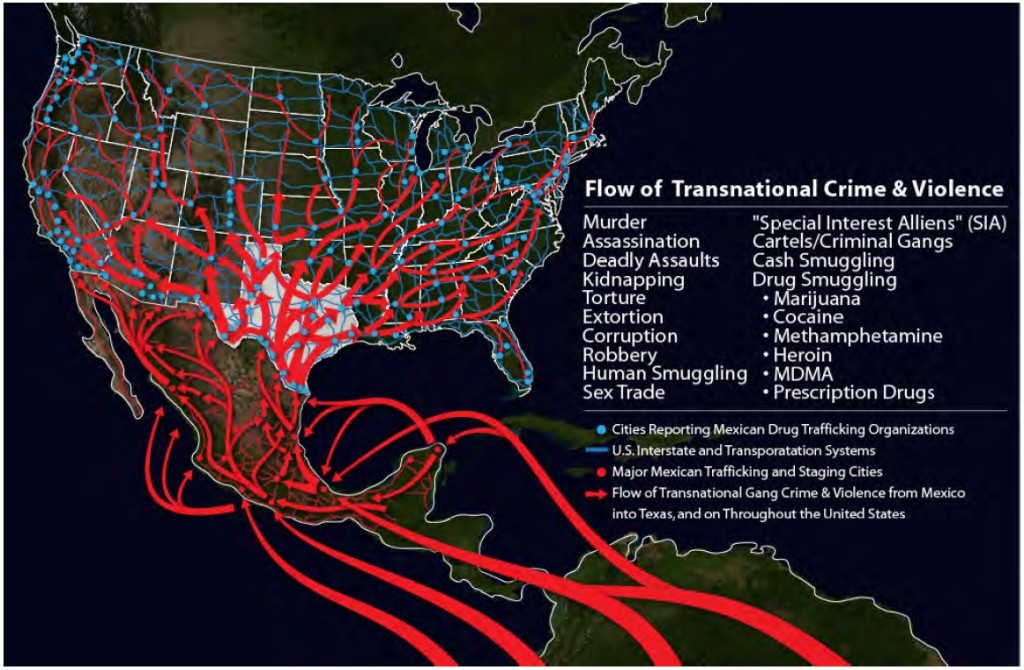
The U.S. Customs and Border Patrol reported that many smugglers are using the once-abandoned coyote routes that were formerly used by small groups of migrants illegally crossing into the U.S. and other countries. The cartels and TCOs are also employing military tactics by creating a diversion resulting in the detention of few and the mass crossing of many. A confidential source working along the US/Mexico border says they have witnessed this on multiple occasions.
“What they’ll (cartel operatives) do is post a few guys up on the ridgeline as an overwatch, then they’ll send a large group of migrants over, knowing that’s going to tie up Border Patrol. The cartel will be monitoring the migrants’ progress and watching the situation unfold. Once Border Patrol has their hands full with the group of migrants, the cartel will send a much smaller group of guys, usually 4 or 5, along an alternate route with their drug haul.”
When modes of ground transportation such as cars or trucks are used, smugglers tend to follow major highways leading to major cities. In the U.S., the intersection of major highways creates distribution hubs.
In cases where smugglers only need to traverse the border with their cargo, they are building underground tunnels and railways to move massive quantities of drugs. The DEA and U.S. Customs and Border Patrol agents have uncovered numerous elaborate tunnels with built-in railways, electricity, and ventilation. In May 2022, a tunnel that extended more than one-third of a mile was located connecting Tijuana, Mexico with San Diego, California. Agents recovered more than 1,762 pounds of cocaine, 165 pounds of methamphetamine, and over 3 pounds of heroin. Just last month, the Mexican military identified an escape tunnel under the home of Ovidio Guzman, son of El Chapo. Other similar tunnels have been located near the homes of high-ranking members of TCOs and cartels globally.
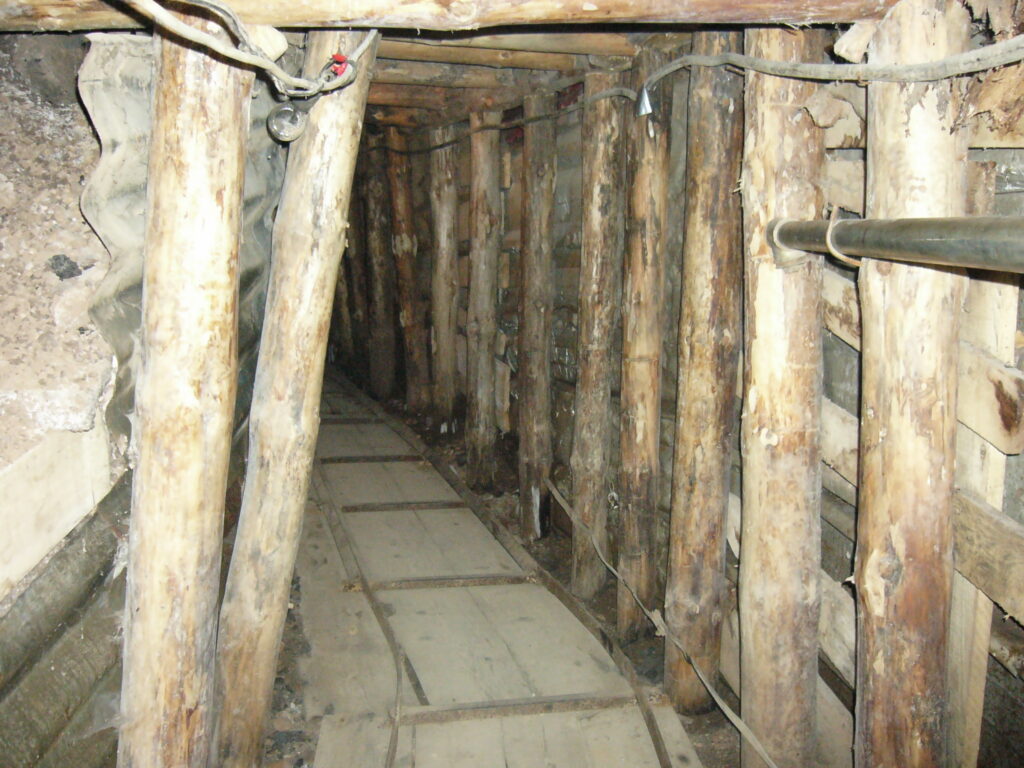
Exploiting air and maritime routes allow for more flexibility through concealment by remaining in International Waters. The use of torpedoes and narco-submarines is one method smugglers use to exploit these routes. Under Campaign ORION, an ongoing multinational counter-narcotics operation led by the Colombian Navy, more than 38 countries pooled their maritime resources to seize more than $5 billion worth of cocaine weighing more than 116 metric tons. To date, the operation is the largest counter-drug trafficking multilateral operation in history.
Drug traffickers in South America have begun exploiting Pacific routes to avoid Caribbean routes that are more strictly monitored under Campaign ORION and similar operations. InSight Crime also reported that traffickers are utilizing escorts for “go-fast”, or cigar boats to avoid both piracy and serve as a distraction for authorities.
Air routes were made popular in the 1970s and remain popular because of the lack of blockades and in-transit seizures. Aside from using traditional fixed-wing aircraft to perform air drops or transport, drug trafficking organizations have begun using ultralight aircraft and drones to avoid radar detection. Drones, often equipped with night-vision and some form of counter-measures, are also being used as counter-surveillance for border crossings and the trafficking of persons and drugs across hostile terrain.
Adapting Methods to Hide Contraband
While the cartels and TCOs have stuck with their tried-and-true methods to smuggle contraband across international borders, their ability to exploit land, sea, and air routes has required the organizations to become more creative in their methodologies to hide the contraband.
“Body packing”—a method where a willing individual (a.k.a. a mule) agrees to swallow or otherwise place packages of illicit drugs on their person in exchange for safe passage or money—has proved to be a tried-and-true method. With the increased number of migrants moving across the Americas, drug traffickers are exploiting some of these individuals in the name of profit.
To overcome the amount of drugs the mule can place within their person, some have become more creative in hiding the drugs on their body or sewing them within clothing. There are numerous accounts of U.S. Customs and Border Patrol agents stopping females who appeared to be pregant. In each of the cases, the female was either wearing a pregnancy bodysuit or taped the packages of drugs to her body to give the appearance of being pregnant. In one case, agents confiscated 34,000 ecstasy pills.
TCOs may also smuggle large quantities of illicit drugs via commercial and passenger vehicles, and underground tunnels. U.S. Customs and Border Patrol agents have identified illicit drugs attempting to be smuggled in fire extinguishers, vehicle parts, and food goods transported across international borders. Smugglers conceal substances by mixing contraband with legal cargo. These bulk transport methods are not only used to transport illicit drugs and weapons, but also to traffic and smuggle persons.
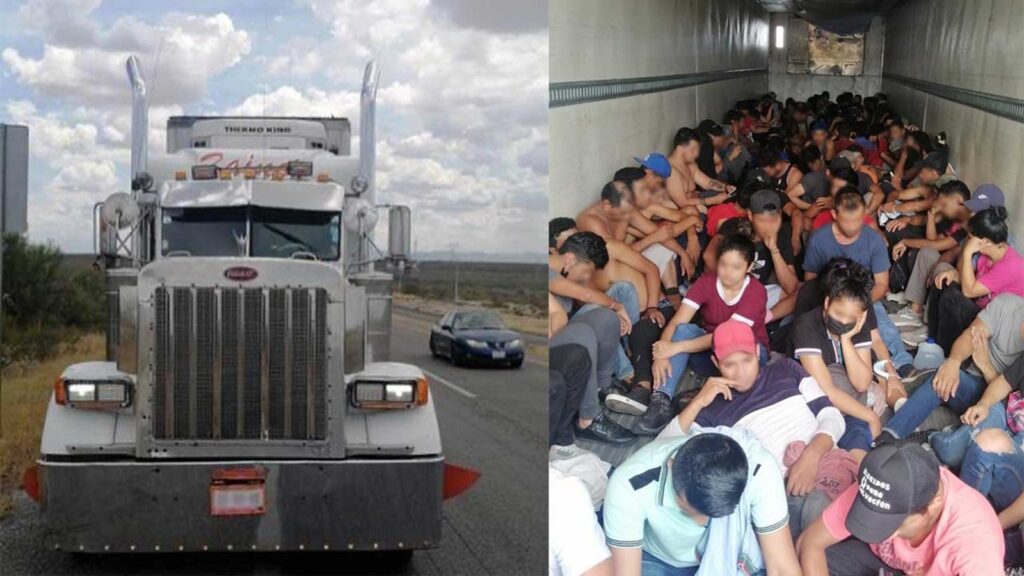
The U.S. Postal Service, UPS, and FedEx have also identified large quantities of drugs being sent via post–both internationally and intranationally. To avoid detection, the drugs may be in solid or liquid form, or hidden within other legal items. In one instance, the U.S. Postmaster General intercepted an intranational package containing 5 pounds of methamphetamine hidden inside a teddy bear.
Narco-submarines and underwater drones have also proven to be useful methods for smugglers to conceal their illicit cargo. The DEA has documented cases where a submersible vessel is tethered to a boat to avoid surface detection. If the boat is intercepted, operators merely cut the tether and allow the drugs to sink to the bottom of the ocean, in hopes they can later be retrieved. In other cases, drug traffickers are exploiting technology by using satellite-equipped buoys to retrieve caches of drugs free-floating in the ocean. In one recent case, the U.S. Coast Guard intercepted a manually operated narco-submarine containing more than 17,000 pounds of cocaine. The Colombian government has also reported a recent narco-sub interception where more than $108 million worth of cocaine was seized.
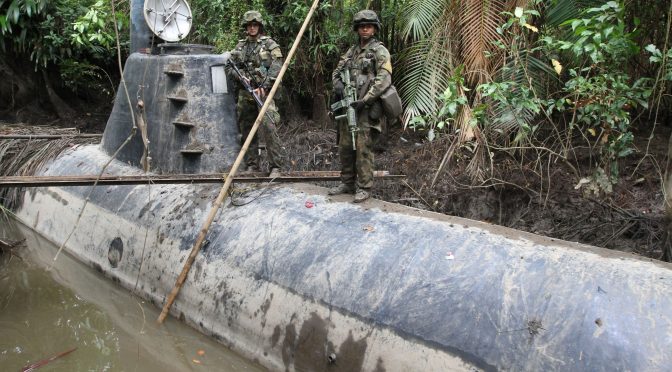
THE TAKEAWAY
Cartels and TCOs have demonstrated a great ability to adapt their smuggling methods based on a variety of factors, such as cargo, transportation mode, geographic conditions, and counter-smuggling operations. Governments are engaged in an ever-changing race against these organizations to counter one another’s tactics. When planning counter-smuggling operations, governments must take a full-spectrum approach that can cover the wide variation of smuggling methods, including air, land, and sea domains. This will ultimately require the cooperation of multiple agencies, departments, and organizations, working collaboratively to help stop the flow of narcotics and human trafficking.
